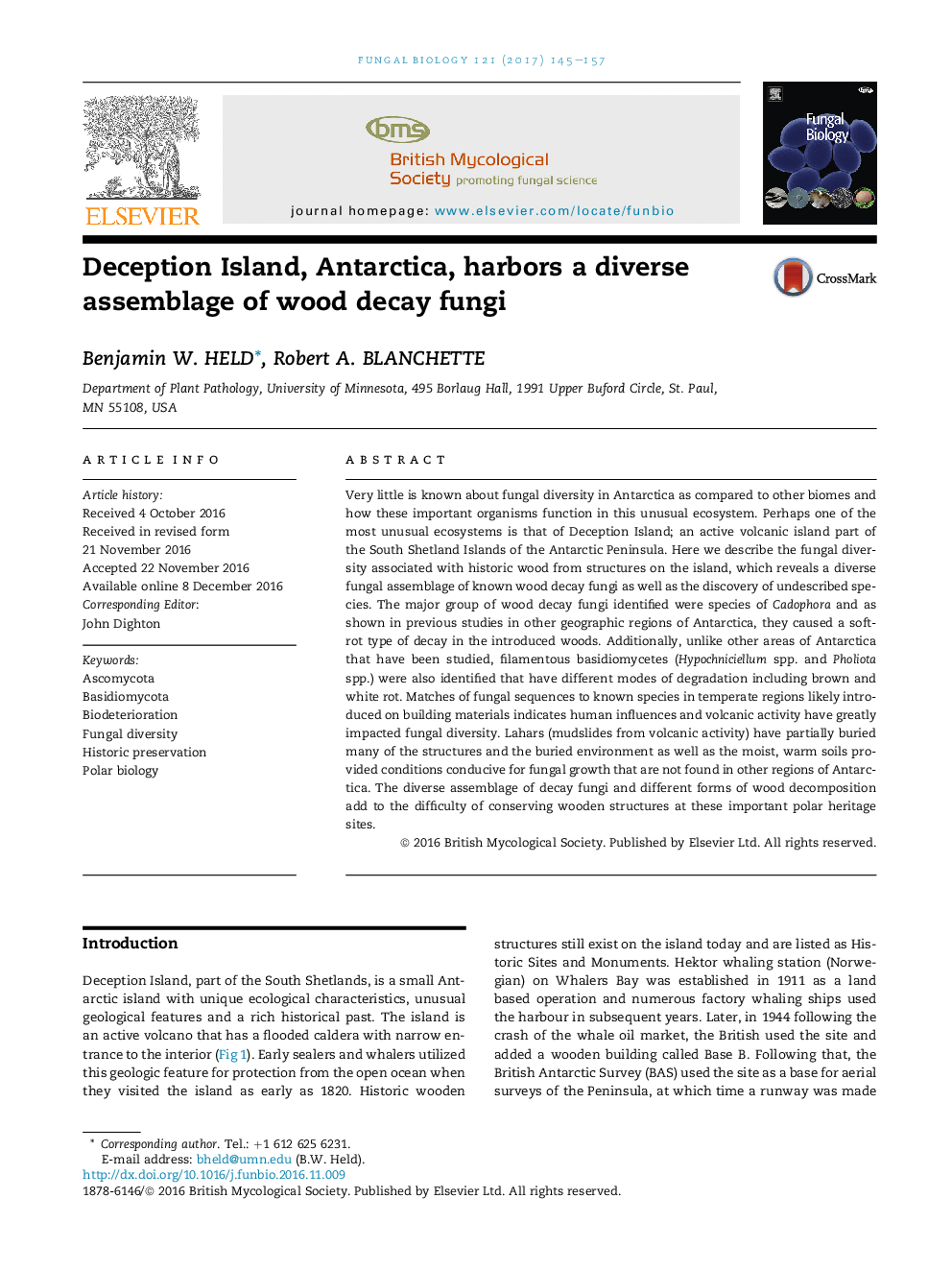| کد مقاله | کد نشریه | سال انتشار | مقاله انگلیسی | نسخه تمام متن |
|---|---|---|---|---|
| 5739658 | 1412109 | 2017 | 13 صفحه PDF | دانلود رایگان |
Very little is known about fungal diversity in Antarctica as compared to other biomes and how these important organisms function in this unusual ecosystem. Perhaps one of the most unusual ecosystems is that of Deception Island; an active volcanic island part of the South Shetland Islands of the Antarctic Peninsula. Here we describe the fungal diversity associated with historic wood from structures on the island, which reveals a diverse fungal assemblage of known wood decay fungi as well as the discovery of undescribed species. The major group of wood decay fungi identified were species of Cadophora and as shown in previous studies in other geographic regions of Antarctica, they caused a soft-rot type of decay in the introduced woods. Additionally, unlike other areas of Antarctica that have been studied, filamentous basidiomycetes (Hypochniciellum spp. and Pholiota spp.) were also identified that have different modes of degradation including brown and white rot. Matches of fungal sequences to known species in temperate regions likely introduced on building materials indicates human influences and volcanic activity have greatly impacted fungal diversity. Lahars (mudslides from volcanic activity) have partially buried many of the structures and the buried environment as well as the moist, warm soils provided conditions conducive for fungal growth that are not found in other regions of Antarctica. The diverse assemblage of decay fungi and different forms of wood decomposition add to the difficulty of conserving wooden structures at these important polar heritage sites.
Journal: Fungal Biology - Volume 121, Issue 2, February 2017, Pages 145-157
